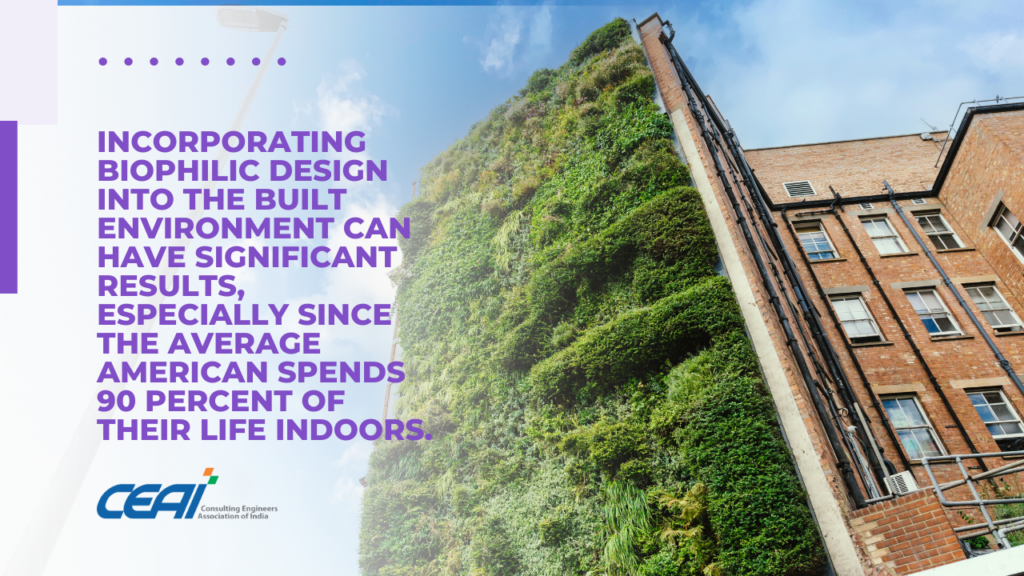
In the dynamic realm of urban development, a transformative design approach is steadily gaining prominence – biophilic design. This evolving concept revolves around the intentional integration of nature into urban landscapes, fostering a profound connection between humanity and the natural world. As cities burgeon and populations soar, biophilic design emerges as a powerful solution to bridge the gap between urban living and nature, all while addressing pressing sustainability challenges.

The Elements of Biophilic Design
Biophilic design encapsulates a range of elements that collectively orchestrate a harmonious blend of nature and architecture. These elements include:
1. Natural Light and Views
Maximizing access to natural light and outdoor views not only amplifies aesthetic appeal but also offers mental and emotional well-being benefits. Daylight has been proven to enhance mood and productivity while diminishing stress levels.
2. Greenery and Vegetation
The infusion of plant life into urban spaces is a quintessential facet of biophilic design. Vertical gardens, rooftop vegetation, and indoor plant installations bring nature’s vitality into the built environment.
3. Water Features
The presence of water elements, such as fountains, ponds, and cascades, adds a serene ambiance while encouraging a stronger connection to nature’s rhythmic patterns.
4. Natural Materials
Utilizing materials like wood, stone, and natural textiles not only introduces tactile richness but also underscores a connection to the earth’s resources.
5. Biomimicry
Drawing inspiration from nature’s intricate systems and forms, biomimicry within biophilic design infuses architectural patterns that mirror the brilliance of natural structures.

The Multifaceted Gains of Biophilic Design
The impact of biophilic design on urban environments is multifaceted. Primarily, it exerts a positive influence on human health. Interaction with nature-inspired elements within urban settings has demonstrated reductions in stress levels, enhancements in cognitive function, and an overall boost in well-being. Furthermore, the incorporation of green spaces and vegetation can mitigate the urban heat island effect, enhance air quality, and contribute to an amiable microclimate.
Biophilic design also aligns with sustainability aspirations. By seamlessly intertwining natural components, structures can optimize energy consumption through passive heating and cooling techniques. There’s potential for decreased reliance on artificial lighting and mechanical ventilation systems, translating to reduced energy consumption and lowered carbon emissions. Moreover, biophilic design can advance water conservation efforts and foster biodiversity by offering habitats for diverse species within urban realms.
Pioneering Urban Transformation
As the rapid urbanization tide surges, there’s an amplified call for inventive solutions that prioritize both human welfare and ecological stewardship. Biophilic design stands as a conduit between city spaces and the natural world, providing a harmonious coalescence that serves the interests of inhabitants and the planet alike. As architects, engineers, and urban visionaries embrace this paradigm, we’re crafting metropolises that are not just functional and visually appealing, but also conducive to wholesome, jubilant, and sustainable living.
A Promising Journey Ahead
In the quest for a verdant and thriving future, biophilic design beckons as a torchbearer – a route to reintegrate the splendor and vitality of nature into our urban hubs. By fusing nature-inspired elements, we chart the course toward a novel epoch of urban progress that nurtures human spirit while safeguarding our shared environment.
